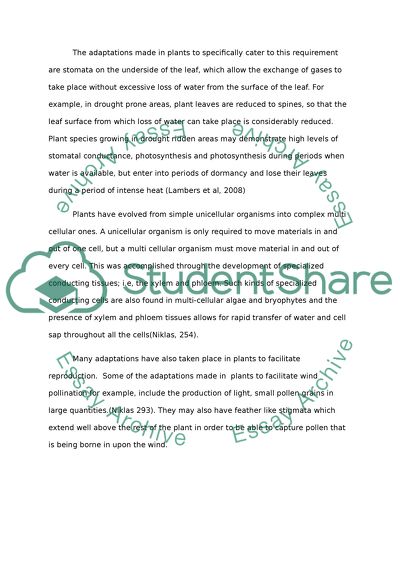Adapting to terrestrial living Essay Example | Topics and Well Written Essays - 500 words. Retrieved from https://studentshare.org/miscellaneous/1552488-adapting-to-terrestrial-living
Adapting to Terrestrial Living Essay Example | Topics and Well Written Essays - 500 Words. https://studentshare.org/miscellaneous/1552488-adapting-to-terrestrial-living.


